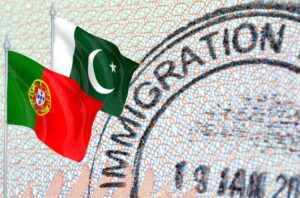Navigating the intricate web of Schengen visa countries can be daunting for many travelers. The Schengen Area, a zone of 27 European countries, celebrates the ease of crossing international borders without the hassle of multiple visa applications. We give a full list of Schengen member countries and offers insightful tips on how you can travel visa-free within this vast area.
Whether you’re planning a multi-country European tour or seeking to benefit from residency by investment programs, understanding the Schengen visa’s nuances is vital. From the basic requirements of the Schengen visa application process to the privileges of residency permits, we delve into what it takes to embark on your European adventure with confidence and ease.
What Is A Schengen Visa
The History and Purpose of the Schengen Agreement
The Schengen Agreement was a groundbreaking treaty signed on June 14, 1985, by five of the ten member states of the European Community. It marked a significant move towards letting people move freely across national borders. The agreement emerged when not all member states were on board with getting rid of border controls.
The Schengen Area officially came into being with the Schengen Convention in 1990. This convention suggested scrapping internal border checks and introduced a common visa policy. Now, the area includes 27 countries, with four non-European Union members.
The Schengen Area is a testament to Europe’s dedication to the free movement of people. It’s home to over 423 million individuals and spans more than 4 million square kilometers. Roughly 1.7 million people commute within this zone every day.
Types of Schengen Visas and Their Validity
Schengen visas are meant for short stays, letting you travel within the Schengen Area for up to 90 days within a 180-day period. This is for tourists, business visitors, or if you’re visiting family and friends. The common visa policy ensures the same rules for getting a visa in all member countries.
The visa application process is uniform, with fees usually at USD 87 for adults and USD 44 0for children aged 6 to 12. There are some exceptions to these fees. Visa applications typically take about 15 days to process, but this can take up to 45 days in certain situations.
To allow enough time for processing, you should submit your Schengen visa application no more than six months and no less than 15 days before your planned trip.
Basic Requirements for Schengen Visa Application
If you’re applying for a Schengen visa, you’ll need to provide several documents. These include a valid passport, a filled-out visa application form, and recent photos. You’ll also have to show proof of travel insurance and documents that support the reason for your visit.
The Schengen Area’s visa policy strives to be efficient while keeping the external borders secure. The Schengen evaluation and monitoring mechanism ensures everyone follows a common set of rules known as the Schengen acquis. These rules cover entry conditions, short-stay visa regulations, and cooperation in police and judicial matters across borders.
While the Schengen Agreement usually means no internal border controls, exceptions exist. Member states can temporarily bring back border checks if there’s a severe threat to public policy or internal security. This flexibility is critical, as it allows for a balance between the freedom to move around and the security needs of the member states.

Schengen Visa Member Countries
Full Schengen Visa Country List
The Schengen Area encompasses most EU nations, with Cyprus and Ireland as notable exceptions. As of March 31, 2024, Bulgaria and Romania will have joined, expanding the zone to 27 countries.
Here is a complete list of the Schengen Visa Countries:
- Austria
- Belgium
- Czechia (The Czech Republic)
- Croatia
- Denmark
- Estonia
- Finland
- France
- Germany
- Greece
- Hungary
- Iceland
- Italy
- Latvia
- Liechtenstein
- Lithuania
- Luxembourg
- Malta
- Netherlands
- Norway
- Poland
- Portugal
- Slovakia
- Slovenia
- Spain
- Sweden
- Switzerland
Non-EU Countries Included in the Schengen Zone
Iceland, Norway, Switzerland, and Liechtenstein are non-EU states that are part of the Schengen Area. Together with the 27 EU countries, they form a unified zone where internal border controls are largely absent, exemplifying the commitment to mobility and cooperation.
Prospective Schengen Members and Candidate Countries
Bulgaria and Romania will initially join the Schengen Area for air and sea travel, with land border inclusion discussions slated for later in 2024. Cyprus has taken a significant step towards full membership by integrating into the Schengen Information System as of July 2023.
Territories with Special Open-Border Status
Although not official members, Monaco, San Marino, and Vatican City have an open-border arrangement with their surrounding Schengen countries. This arrangement allows for the free movement of individuals and goods, demonstrating the Schengen Area’s expansive influence.

Application Process for a Schengen Visa
Step-by-Step Visa Application Procedure
To begin your journey to the Schengen Area, determine the appropriate consulate for your application. For single-country visits, the consulate of that nation is your point of contact. For multi-country trips, choose the consulate of the nation where you’ll spend the majority of your time or, if the duration is equal, the country of first entry.
Applications requiring additional scrutiny can be processed in up to 45 days. If your application is denied, you will receive a standard form detailing the reasons, enabling you to rectify any issues for future applications.
Scheduling the Visa Interview
Once you’ve identified the correct consulate, arrange a visa interview to present your case for travel. Attendance is mandatory, and failure to appear could result in additional fees and the need to reschedule. If you’re unable to attend as planned, promptly inform the consulate and provide a valid explanation for your absence.
Documentation Needed for Application
The required documentation for your application may differ depending on your travel purpose and the specific country’s criteria. Generally, you must furnish evidence of your itinerary, accommodation arrangements, sufficient funds for your stay, and comprehensive travel insurance. Your biometric information will be recorded at your interview.
Verifying the precise documentation list for the nation you intend to visit is essential to ensure your application is complete.
Visa Fees and Payment Methods
Certain individuals may be exempt from the visa fee. Payment methods differ by consulate; fees are typically collected during the visa interview. Confirm the accepted payment methods with the consulate beforehand to ensure a smooth process.
Staying informed about your application’s status by contacting the consulate or checking online, if available, is advisable. Promptly addressing any issues that arise can contribute to a favorable outcome.
Travel Visa Free Through The Schengen Area With Residency
How Does Residency By Investment Work?
Residency by investment programs cater to affluent individuals seeking the privilege of living, working, and accessing education and healthcare services in a foreign nation. These initiatives typically necessitate a substantial economic contribution to the destination country, such as real estate acquisition, donations to a development fund, or business investments.
Applicants and their families can obtain legal residency in return for their financial commitment. This status may eventually lead to citizenship through naturalization, subject to the host nation’s regulations. The application process is comprehensive, including due diligence checks and financial source verification.
Upon approval, applicants receive a residence permit, which can be either temporary or permanent. This permit frequently includes the perk of visa-free travel within the Schengen Area, allowing for unhindered movement across numerous European countries.
Residency By Investment Countries That Have Full Schengen Access
A number of nations provide residency by investment schemes that confer unrestricted access to the Schengen Area, facilitating seamless transit across various European states. Austria, for example, offers residency to a limited number of applicants proficient in German who satisfy stringent criteria, including visa-free entry to the Schengen Area.
Cyprus, known for its allure to international property investors, provides a permanent residency program that encompasses Schengen Zone access. Greece’s well-received Golden Visa Program issues a residence permit through a property investment, with a typical processing time of four months.
Italy proposes two investment avenues for those desiring Schengen mobility: one without the necessity for permanent residency and the other beginning at an investment level of USD 272,100. Latvia’s scheme also permits absence from the country and mandates a minimum investment of USD 65,300.
Malta’s Permanent Residence Programme facilitates Schengen travel and assimilates investors into the EU’s societal and legal frameworks. Portugal’s Golden Residence Permit Program offers a route to Schengen travel and the entitlements to reside, work, and study in Portugal. Spain’s Residence by Investment Program provides comparable benefits and Schengen access.
These schemes differ from typical travel visas by offering a more expedited application process and allowing dependents to be included. Maintaining a residence permit can sometimes require residing in the investment country.
While the Schengen Area comprises countries such as Austria, Belgium, Greece, Italy, Latvia, Malta, Portugal, and Spain, it’s important to note that Bulgaria, Cyprus, Ireland, and Romania are not included. Nevertheless, possessing a Schengen visa or residence permit can simplify travel to these nations.
For those contemplating renunciation of their US citizenship, acquiring an EU investment visa could be a strategic decision to retain travel liberties within the EU. Travelers must carry a valid passport or travel document, ensuring it meets the required validity criteria.
Holders of a residence permit from a Schengen country are entitled to 90 days of travel within a 180-day span in the Schengen Area. This benefit is substantial as it dispenses with the need for recurrent checks when passing through borders between Schengen states.
Nonetheless, admission may be refused if the traveler does not satisfy the Schengen Borders Code’s entry prerequisites, which include possessing a valid travel document and adequate funds for the duration of the stay.

Common Questions About Schengen Visas
Can I Work With a Schengen Visa?
A Schengen visa does not permit employment within its territory. To engage in work, you must obtain a National D-type Work visa, which is specific to the country of employment within the Schengen zone and does not authorize work across multiple countries.
For professional activities lasting less than 90 days, a short-stay Schengen work visa may be appropriate. For longer durations, a D-type visa is required. The application process for this type of visa typically involves providing an employment contract and evidence of qualifications. It is recommended that you apply well in advance of your travel date, as the processing time can be lengthy.
What to Do If Your Schengen Visa is Denied
In the event of a visa refusal, it is important to review the provided explanation for the decision. Each country within the Schengen Area has its own appeal or reapplication procedures. Address any discrepancies or omissions in your documentation before submitting a new application or filing an appeal.
Understanding Schengen Visa Overstay Regulations
Penalties for overstaying can include fines, deportation, and bans on future entry into the Schengen Area. It is crucial to adhere to the 90/180 rule. If an extension of your stay is necessary, you must apply for it before your current visa expires, and the fee for an extension is equivalent to that of the initial application.
Tips for a Smooth Schengen Visa Experience
To facilitate a successful visa application, compile all necessary information and documents in advance. Embassies typically offer online checklists and forms to assist applicants. Since applications can be submitted up to three months before the intended travel date, it is advisable to apply within this window at the earliest opportunity.
Acquiring travel and medical insurance that satisfies the minimum coverage criteria is essential. Presenting yourself professionally and organizing your documents for the visa interview can contribute positively to the process. Meticulous preparation and adherence to these recommendations can enhance the likelihood of obtaining your visa.
Final Thoughts on Schengen Travel and Residency
Embarking on a journey through the Schengen Area, with its rich tapestry of cultures and landscapes, is a venture worth pursuing. Whether you’re seeking short-term stays with a Schengen visa or contemplating residency by investment for its myriad of benefits, the process remains straightforward, and the rewards are alluring.
In travel and residency, thorough preparation and compliance with visa regulations are paramount. By carefully considering the information provided, you can confidently navigate the application process and embark on your European adventure. Remember, the Schengen Area not only offers a gateway to diverse experiences but also serves as a testament to the power of unity and the free movement of people. Explore, invest, and immerse yourself in the vast opportunities that await.





